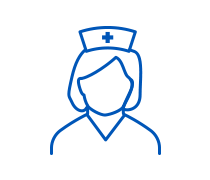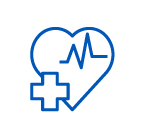Burnout is a very real workplace issue, and it is taking a particularly heavy toll among healthcare providers. This issue must be confronted for the sake not only of physicians and nurses whose mental and emotional well-being are at risk, but also of those who rely on them for care.
Studies have chronicled the effects of burnout in healthcare, a high-stakes field where, for many, the COVID-19 pandemic has only increased the stress and given rise to a feeling of hopelessness. In a Medscape survey of more than 12,000 physicians in about 30 specialties, only 49% reported being happy in 2020 versus 69% before the pandemic. More than one-third were unhappy in 2020, up from 19% the previous year.
It’s important to consider the dangers of burnout; assess whether it is a factor for you personally (and if so, take steps to address it); and, if you are in leadership, do what you can to prevent it in your organization.
“Clinician burnout is real: It’s critical for healthcare organization leadership to call it out and acknowledge it; only then can it be addressed with measures that not just deal with the issues but creatively reduce and prevent factors that contribute to burnout,” Dr. Rasu Shrestha, executive vice president and chief strategy and transformation officer at Atrium Health, told Healthcare IT News.
Nurses have been leaving their jobs at a record pace, feeling they must choose between their careers and their health. Even before the pandemic, the number of geriatric physicians and nurses had been on a steady decline since 2000. A 2018 study attributed the drop to several factors, including a tendency by healthcare providers not to choose geriatrics as a specialty area and the intimidating “complexity of caring for elderly patients with geriatric syndromes and multiple morbidities.”
“Burnout is toxic for patients as well as physicians, because it’s associated with loss of empathy, impaired job performance and increases in medical mistakes,” Pamela Hartzband, MD, and Jerome Groopman, MD, wrote in “Physician Burnout, Interrupted,” published in The New England Journal of Medicine.
Navigating the landscape
Healthcare has always been a potentially stressful environment (79% said their burnout started before the pandemic, according to Healthcare Finance), and the pandemic certainly has done nothing to reduce the stress.
Difficult conditions, long hours, grief over losing patients and watching patients’ families suffer have long been part of the job description. COVID-19 exacerbated these conditions, which directly led to an increase in stress regarding personal risk and fears of spreading the coronavirus to loved ones. In fact, providers reported worrying more about infecting family or others in the community than about contracting the virus themselves. Especially early in the pandemic, the lack of personal protective equipment (PPE) heightened these concerns.
Social distancing and the shift from physical to virtual models of care have also been challenges, as have financial uncertainty and, for some, job insecurity as many hospitals and other healthcare facilities suffered economically.
Bureaucratic tasks, changing and uncertain hospital policies, frequent schedule changes, inadequate resources, and the need to stay on top of constantly changing information have heightened the burden for many providers.
An overall feeling of powerlessness has been one common complaint during the pandemic, and the cumulative effect has spilled over into providers’ home lives.
“Healthcare providers are also reporting increasing levels of social stigma from their communities,” said Monisha Sharma, MD, acting assistant professor in the department of global health at the University of Washington in Seattle, in an interview in Infectious Disease Advisor. “While being portrayed as heroes of the pandemic, they are simultaneously facing ostracism from social gatherings, neighbors, playdates and other activities because they are perceived to be at high risk of COVID-19 infection. This can compound the feelings of social isolation due to long work hours and distancing guidelines.”
Leadership during a pandemic

During stressful conditions such as a pandemic, calm leadership can set a positive example for the staff of a healthcare facility. In the early days of COVID-19 in the United States, Main Street Care Center in Avon Lake, Ohio, experienced one of the first nursing home outbreaks in the state. At this time, much was unknown about the coronavirus, including how to establish COVID-19 units, care for residents and protect the staff caring for those with the virus.
Maidana Vacca, MD, an internal medicine specialist with the Cleveland Clinic and, since 2017, the medical director for Main Street Care Center, “was immediately hands-on, working the floor side by side with our frontline staff,” said Shannon Kuhn, LNHA, vice president of operations for Sprenger Health Care Systems. “She was directly caring for the residents along with educating staff to ensure that the residents were receiving the best care possible.
“Dr. Vacca’s early leadership and willingness to work on the COVID units helped to calm and put staff at ease when there was so much uncertainty in the early stages of COVID outbreaks.”
Combating burnout
The first step in combating burnout, provider advocates say, is to acknowledge that burnout exists and take steps to remove the stigma associated with it. Burnout is not a sign of weakness but something that can affect anyone.

Then providers must learn to recognize the symptoms of burnout—in themselves as well as in their colleagues. They must prioritize self-care, support peers with wellness checks and urge hospital leaders to make provider mental health a priority across the organization.
“Research by faculty at George Mason University’s College of Health and Human Services found that healthcare professionals with a greater personal ability to respond to change experienced lower rates of burnout when their work environments offered strong communication, teamwork and leadership support,” Healthcare Finance reported.
From an administrative standpoint, measures that can help reduce burnout and better support physicians include:
- Sufficient staffing and a realistic workload
- Clearly communicated hospital policies and protocols
- Streamlined, accurate and consistent hospital communication
- A culture that encourages that providers make their own well-being a priority
- Letting teams know how much they are valued
- Adequate PPE
During the pandemic, Sprenger Health Care Systems provided education and support to its staff through its complimentary Employee Assistance Program. This included stress management, mental health stress relief techniques, proper diet and exercise tips, and helping staff find ways to take time for themselves.
In addition to alleviate day-to-day stress and provide some fun, Sprenger Health Care Systems implemented a weekly “dress down day” for all staff. Coupled with a fun trivia contest with prizes, this helped promote a sense of community. Executive leadership also produced thank-you videos for all staff with photos and heartfelt messages expressing appreciation to frontline workers, according to Kuhn.
“Find the stressful points in the day or system that can be improved to make the days efficient and easier to allow physicians to focus on what they love most,” such as patient care, research and education, Charlene M. Dewey, MD, of the Vanderbilt University School of Medicine in Nashville, Tennessee, recommended during an expert roundtable held by Infectious Disease Advisor.
From Hartzband and Groopman’s perspective, “The problem of burnout will not be solved without addressing the issues of autonomy, competence and relatedness.” Restoration of autonomy, as they see it, means giving doctors flexibility in scheduling and patient interaction. “Competency can be restored by purging the system of meaningless metrics while maintaining a core of evidence-based measures, allowing for clinical judgment, and honoring individual patient preferences. Relatedness should be authentic, aligning the system’s values with those of physicians, nurses and other (healthcare) professionals who chose their careers out of altruism.”
Taking care of yourself
Dewey recommended several measures for providers to take on an individual level to ensure good self-care:
- Eat healthy foods.
- Get plenty of sleep.
- Engage in physical activity (even walking breaks can help).
- Use mindfulness practices in prayer, meditation and resting.
- Reflect on reasons for gratitude.
“Balance of life, support of professional teams and practice of self-awareness is the key to avoiding burnout,” Dr. Dhrumil Shah, a family physician and chief medical information officer at Compass Medical, an ambulatory primary care practice in East Bridgewater, Massachusetts, told Healthcare IT News.
When it comes to burnout among healthcare providers, the ancient proverb “Physician, heal thyself” has particular relevance. In order to provide the best possible care for others, we must tend to our own physical and mental health.
As COVID-19 began to spread in March, fear of being hooked to a machine with the end of life looming quickly became a national storyline. Read how important it is to set appropriate care goals before it’s too late.



